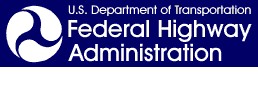Comparative Analysis Report: The Benefits of Using Intelligent Transportation Systems in Work Zones


October 2008
Printable Version [PDF
1.8 MB]
You will need the Adobe
Reader to view this PDF.
Contact Information: WorkZoneFeedback@dot.gov
Report Number FHWA-HOP-09-002
Table of Contents
Technical Report Documentation Page
Purpose
Site Selection - Process and Criteria
Timing of the Evaluations
Common Measures and Metrics for Work Zone ITS Evaluations
Mobility
Safety
Effectiveness of Work Zone Information Dissemination
System Performance
Study Site Work Zone
ITS Description
Measures and Metrics
Findings
Tips and Lessons Learned
Study Site Work Zone
ITS Description
Measures and Metrics
Findings
Tips and Lessons Learned
Study Site Work Zone
ITS Description
Measures and Metrics
Findings
Tips and Lessons Learned
I-30 Little Rock to Benton, Arkansas
Study Site Work Zone
ITS Description
Measures and Metrics
Findings
Summary of Findings - Arkansas
Tips and Lessons Learned
I-40 Winston-Salem, North Carolina
Study Site Work Zone
ITS Description
Measures and Metrics
Findings
Tips and Lessons Learned
Findings on Key Measures Across Sites
Cross-Cutting Tips and Lessons Learned
Comparisons with Results of Other Studies
Enforceable Merge Systems
Traffic Information Systems
Additional Comparative Data
List of Figures
Figure 1. DC-295 Work Zone Area and
ITS Layout
Figure 2. Average Speed by Time of
Day – April 13, 2007
Figure 3. Volume Levels by Time of
Day
Figure 4. Volume Levels by Time of
Day
Figure 5. I-35 Work Zone and Signed
Alternate Routes (Taken from TXDOT's Website)
Figure 6. Modified Corridor Map Showing
Data Collection Sensor Locations
Figure 7. Volume Patterns (Q3: 35E SB)
– October 12th Lane Closure (without ITS)
Figure 8. Occupancy Values (System Q4:
35E SB) – October 12th lane closure (without ITS)
Figure 9. Occupancy Values (System Q1:
I-35 NB) – November 26 Incident (With ITS)
Figure 10. Volumes (Q2: I-35 NB) –
November 26 Incident (With ITS)
Figure 11. 2003 Peak Hour Volume
Counts on US-131
Figure 12. DLM Layout Along Northbound
US-131
Figure 13. DLM System Setup
Figure 14. Dangerous Merge Maneuvers
by Approach
Figure 15. Daily Traffic Counts by
Approach and Detection System
Figure 16. Arkansas I-30 Work Zone
Location
Figure 17. Overview of I-30, Little
Rock to Benton, Arkansas Work Zone
Figure 18. Distribution of Driver's
Opinions on the Statement "DMS Makes Drivers Feel Safer in the
Construction Zone" (Private & CVDs)
Figure 19. Distribution of Sources
Used to Get Information about Traffic Conditions on I-30
Figure 20. Activity in Work Zone
Webpage Servers (8/16/2005 was a Tuesday)
Figure 21. Distribution of Responses
to the Statement, "Just Having The DMS Information Makes Me Feel
Less Bothered By The Delays In The Construction Zone."
Figure 22. Distribution Of Responses
To The Statement, "Just Having The Website Information Makes Me
Feel Less Bothered By The Delays In The Construction Zone."
Figure 23. Location of Ramps Used
for Hypothesis No. 9
Figure 24. Locations of Detectors
Used for Hypothesis 11
Figure 25. I-40 Work Zone and Signed
Alternate Routes
Figure 26. I-40 Smart Work Zone
Deployment Near Winston Salem
Figure 27. Daily Volume Totals
Reported by System Detector #9
List of Tables
Table 1. Hypotheses and Measures for
Evaluation
Table 2. Construction and Lane Closure
Information
Table 3. Construction and Lane Closure
Information
Table 4. Percent Change in Volume by
Time Period
Table 5. Example Queue Thresholds -
35W Southbound
Table 6. Key Hypothesis, Measures, and
Data Sources for Evaluation
Table 7. Construction and Lane Closure
Information (October 2006)
Table 8. Construction and Lane Closure
Information (November-December 2006)
Table 9. Diversion Rates for November
23rd Incident Compared with Other Thursdays in November
Table 10. Diversion Rates for November
26th Incident Compared with Other Sundays in November
Table 11. Measures and Metrics for
the Michigan DLM deployment
Table 12. Aggregate Aggressive Driving
Observation Classifications by Date (Northbound)
Table 13. Aggregate Aggressive Driving
Observation Classifications by Date (Southbound)
Table 14. Statistics for 2 Days Flashers
Were On and 6 Days They Were Off
Table 15. Location of DMS Used for
Hypothesis No. 9
Table 16. Summary Findings for Each
Hypothesis
Table 17. Hypotheses and Measures
for Evaluation
Table 18. Construction and Lane
Closure Information (without ITS)
Table 19. Construction and Lane
Closure Information (with ITS)
Table 20. Average Speed Values
Reported As "240"
Table 21. Comparison of Key Measures
by Site
Table 22. Drivers' Agreement with the Statement
That DMSs Better Prepare Them To React to Stopped or Slow Traffic
Table 23. Driver's Agreement with the Statement
That DMS Makes Them Feel Safer
Table 24. Drivers Agree The Web Site Improved
Trip Planning
Table 25. Drivers Agree DMS Contain Enough
Detail
Table 26. Drivers Agree DMS Are Located in
the Right Places
Table 27. Drivers Agree HAR Messages are Detailed
Enough to Help Them Make Decisions
Table 28. Driver Response to Statement that
DMS are Easy to Understand
Table 29. Driver Response to the Statement
that DMS are Detailed Enough to Help Me Make Decisions
Table 30. Drivers Response to Statement that
HAR Broadcast Quality is Too Poor to Hear
Table 31. Drivers' Response to Statement that
HAR Messages are Detailed Enough to Help Make Decisions
Table 32. Drivers Agree the Information on
the Web Site is Accurate
Table 33. Drivers Find the DMS Messages To
Be Accurate
Table 34. Drivers Find HAR Messages To Be
Useful
Table 35. Drivers Find HAR Messages to Be
Accurate
Table 36. Drivers Find HAR Messages To Be
Updated Frequently Enough
Table 37. Combined Volume From The ITS Detectors
(62 and 26) Was Significantly Higher Than The AHTD Tube Data
Table 38. Combined Volume From The ITS Detectors
(63 and 25) Was Not Different Than The AHTD Tube Data

U.S. Department of Transportation
Federal Highway Administration
Office of Transportation Operations
1200 New Jersey Ave., SE
Washington, D.C. 20590
Toll-Free Help Line: 866.367.7487
www.fhwa.dot.gov/workzones
FHWA-HOP-09-002